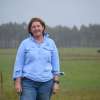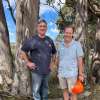
Sound science needed to assess carbon impacts of timber harvesting
Posted 13 December 2024
Harvesting and selling wood Carbon benefits PFT
Forestry Australia has welcomed a new study published in Australian Forestry peer-reviewed journal by the former chief research scientist at the CSIRO, Dr John Raison.
The paper, titled A review of the impacts of sustainable harvesting, non-harvest management and wildfire on net carbon emissions from Australian native forests, investigates the science behind claims that timber harvesting increases greenhouse gas emissions.
Dr Bill Jackson, Acting President of Forestry Australia said Australian and international studies highlight the potential to lower carbon emissions by producing and using wood products from sustainably managed forests, particularly as substitutes for high-emission building materials.
“This paper demonstrates the complexity in accounting for the impacts of changes to forest management on carbon stocks and greenhouse gas emissions from Australian native forests,” Dr Jackson said.
“Assessing carbon impacts of forest management needs to consider the full life cycle of forest management, wood production, processing, use and disposal or reuse.
“The outcome depends heavily on assumptions about initial conditions, harvest intensity, timber recovery, lifetime of forest products, the impacts of wildfire and the time frame of the analysis.
The paper points out that it is important to get these assumptions right, otherwise policy makers can be ill-informed about the effects of their decisions on carbon emissions.
Dr Jackson said policy makers also need to consider the short, and long-term, impacts on carbon stocks of decisions to reduce or cease native forest harvesting. This includes the impacts of wildfire and reduced professional forest and fire management capacity in agencies responsible for timber production.
“This paper has implications for development of new emission reduction methods under Australia’s ACCU scheme.
“Appropriate, landscape scale analysis using scientifically sound sampling and surveys of carbon stocks and dynamics are required to inform these methods.
“The best opportunities are likely to lie in approaches that improve forest management to better integrate conservation, restoration and sustainable production and use of forest products,” Dr Jackson said.
The paper can be viewed here: https://www.tandfonline.com/doi/full/10.1080/00049158.2024.2433815
Share this Article
Latest Articles
-

17 September 2025
Celebrating excellence at the Tasmanian Timber Awards
-

17 September 2025
Forest Practices Authority Research Update Day
-

13 August 2025
Have you seen our Stems for CO2 Project signage on the Midlands Highway?
Archives
- ActivAcre hits milestone, calls for more farmers to get on board
- Napier's leading the way in sustainable forestry and carbon-neutral farming
- Sound science needed to assess carbon impacts of timber harvesting
- Newly appointed TFFPN Board of Directors
- Graduate Certificate of Forestry Scholarship
- Forestry Australia Mentoring Program 2025
- Forest Industry Roundtable planning for the long term
- Eagle Management Constraint Period extended
- Successful private native forest management celebrated
- $15 million investment in new ship loader to boost Bell Bay's forestry exports
- Standing with Tasmania's forestry industry: buy local
- TFPA: Tasmanian Freight Equalisation Scheme needs a ground-up review
- AFCA Gala Dinner celebrates industry excellence
- Fire permits now required Statewide
- Forest leaders hone skills in sustainable native regrowth management
- Tasmanian forests and the carbon market: Barriers and opportunities
- Spring is the time for fuel reduction burning
- Primed for Growth: A situation analysis of the Tasmanian Forest and Wood Products Sector
- Audit requirements cut for low-risk plantation projects
- Guidance and support for landowners after damaging winds
- Forestry Australia welcomes further definition of active forest management
- Farm & Forest Mapper Tool highlighted at Rural Youth Tasmania's Young Farmer of the Year competition
- Senate Select Committee inquiry into the Tasmanian Freight Equalisation Scheme
- Timberlink announces new wood composite products brand
- Newly developed protocol a vital tool for safeguarding forestry industry
- Red Hot Tips: Fire management for Tassie farmers
- Bioenergy: Fuelling industries with trees
- Harvesting trees: What you need to know
- Shelterbelts: How are they contributing to farm systems?
- Infill plantings and remnant vegetation: Why biodiversity depends on a thriving understory
- Plantation planning: The key to a successful plantation
- Exciting interactive forestry knowledge hub launched
- $450,000 farm forestry grant recipients revealed



